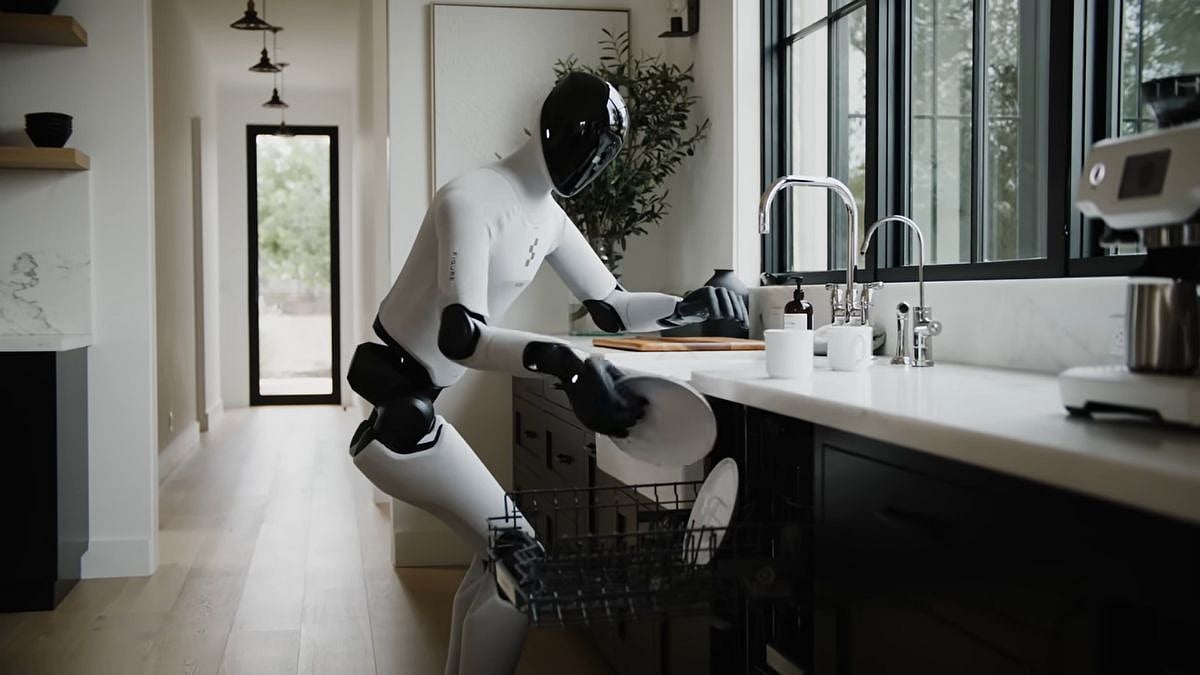'We Will See Billions of Humanoids On The Planet In Our Lifetime': Figure AI Founder Brett Adcock Foresees Robot Revolution
Figure AI has already shipped three generations of humanoid robots in just three and a half years. Their latest model, Figure 3, operates autonomously using neural networks and has been deployed commercially with companies like BMW.

Brett Adcock, founder and CEO of Figure AI, is betting big on the robot revolution. He has made a rather strong prediction about humanity's future. According to him, billions of humanoid robots will walk among us within our lifetime, fundamentally transforming how we work and live.
In a recent interview with Nikhil Kamath, Adcock shared his vision for a world where robots handle everything from household chores to complex manufacturing tasks. "I think the end state for most things done in the physical world is done through a humanoid robot," he said.
Who is Brett Adcock?
Adcock's journey to robotics began on a third-generation farm in the American Midwest. After selling his AI recruiting marketplace Vettery for over $100 million in 2017, he founded Archer Aviation, which develops electric vertical takeoff and landing aircraft. Three years ago, he pivoted to what he calls 'the ultimate meta problem', building general-purpose humanoid robots.
Figure AI has already shipped three generations of humanoid robots in just three and a half years. Their latest model, Figure 3, operates autonomously using neural networks and has been deployed commercially with BMW for over five months.
Each Figure robot contains approximately 40 motors controlling individual joints, creating an astronomical number of possible positions, 'more potential states than atoms in the universe,' according to Adcock. The robots run on lithium-ion battery packs similar to electric vehicles, with all computing happening onboard via CPU and GPU processors housed in the torso.
Eight cameras provide vision, including one on each palm, allowing the robots to "reason in pixel space" like camera-based self-driving cars. Force sensors throughout the body enable them to feel pressure and maintain balance, distinguishing them from traditional industrial robots.
Interact with robots using normal conversation
Adcock believes voice will become the primary interface for interacting with robots. "Voice is the natural UI into artificial superintelligence," he said, predicting that within one to two years, voice AI models will be indistinguishable from humans.
The ultimate test of success? A robot that can respond to a voice prompt like "make sure my laundry's done before I get home" in an unfamiliar environment, planning, adapting, and completing tasks autonomously over hours.
Robots in the real-world today
Figure robots already operate without network connectivity in commercial settings, performing useful work fully autonomously. While current models are less energy-efficient than humans, Adcock sees a clear path toward human-like energy consumption as both AI models and hardware improve.
The vision extends beyond factories into homes, where Adcock envisions robots becoming companions with "infinite context window for memory," capable of understanding emotional states from voice tone alone.
Despite the sci-fi feel of walking robots in his office, Adcock insists the technology isn't scary to those who built it. "We really understand the limitations," he said, emphasising intrinsic safety design. The future he describes isn't decades away, it's unfolding now, with billions of humanoid helpers on the horizon.
This has been confirmed by another US-based company called 1X. They have launched the first humanoid robot built for homes of the masses. They call it Neo, and it can do household chores, self-charge, and transform into a Bluetooth speaker. This robot is currently up for pre-order in the US with deliveries starting from 2026.
RECENT STORIES
-
-
-
-
-